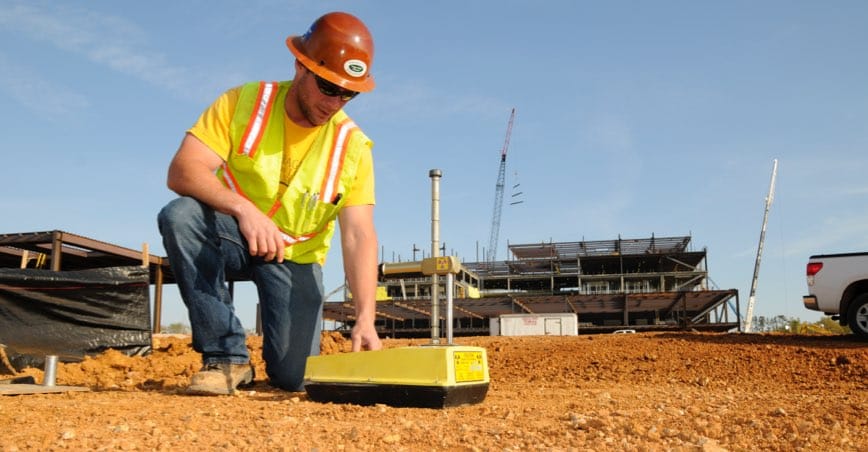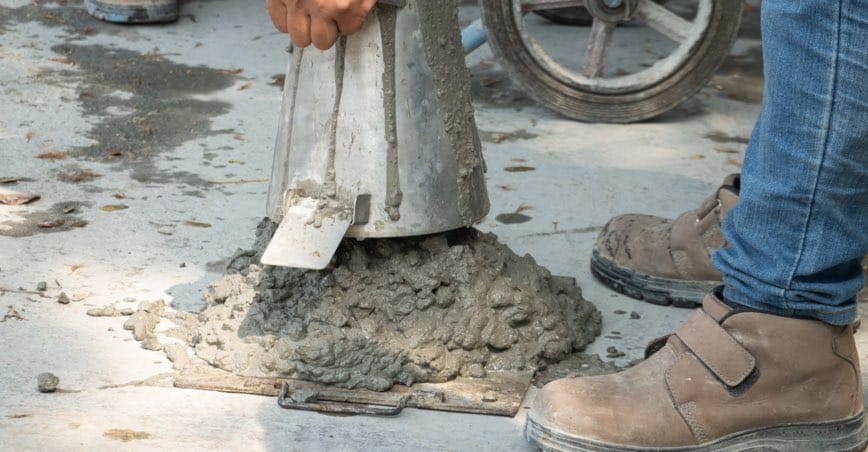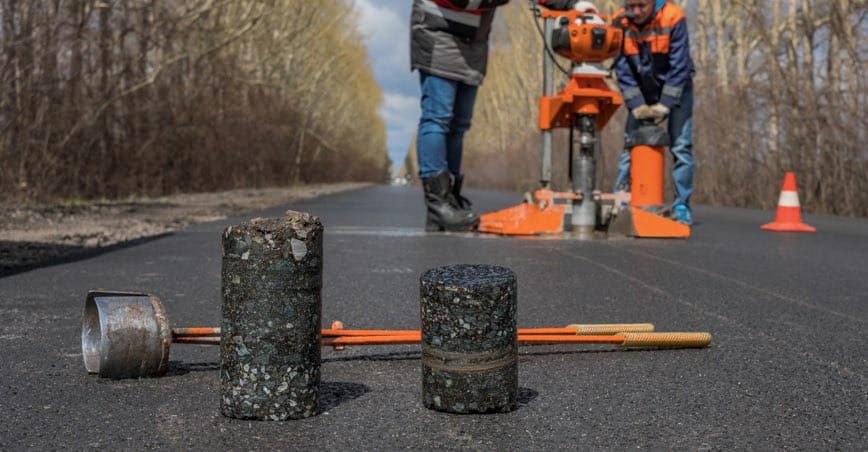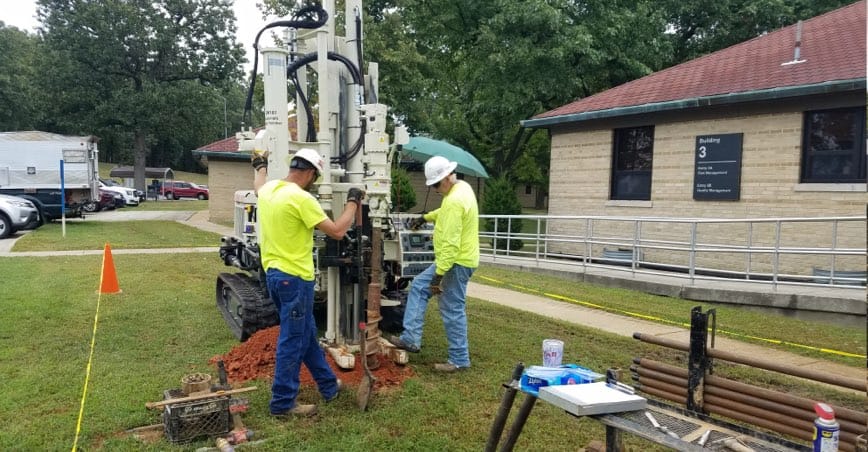Materials Testing
Your Hometown Materials Testing Firm
Smith & Co. Engineers is an employee-owned engineering firm offering quality control testing during design and construction phases. Your Hometown Materials Testing Firm:
- American Society for Testing and Materials (ASTM)
- American Association of State Highway and Transportation Officials (AASHTO)
- Missouri Department of Transportation Certified Technicians
- Arkansas Department of Transportation Certified Technicians
- Laboratory holds accreditation through AASHTO
- Scope of our specific accreditations: http://www.aashtoresource.org/accreditation-details?LaboratoryID=4PKOD4RqjdY*V
Our Focus
Material Testing with Smith & Co.
We provide thoroughly trained technicians that can perform our accreditated scopes of ASTM and AASHTO material testing procedures. Our technicians are cross trained by the Missouri Department of Transportation, Arkansas Department of Transportation, and American Concrete Institute.

Soil—Aggregates
Understanding the properties of soil is important anytime a change is desired with the soil. For example, when planting a garden or farming, the nutrient levels and water content of the soil are critical. Similarly, it is also important to understand the soil characteristics when planning a building, highway, bridge, or other construction activity. How much weight will the soil or aggregate support before it begins to deform? How erodible is the soil or aggregate? How much settlement will occur? The answers are important to infrastructure owners and engineers. Many soil and aggregate properties can be tested in our laboratory or in the field. Material classifications vary based on geography making it important to know what you are dealing with.
- Absorption
- Atterberg (Liquid/plastic Limit)
- Bearing Capacity
- C-33
- Clay Lumps/Friable Particles
- Density/Moisture
- Fine Aggregate Angularity
- Fineness Modulus
- Flat & Elongated
- Fractured Faces
- Gradation
- Grain Size Analysis – Hydrometer
- MoDOT Freeze/Thaw

Concrete
The discovery of the importance of hydraulic lime or calcium oxide in ancient times (1400-700 BC) revolutionized the construction industry. The Pantheon in Rome, Italy is still the world’s largest unreinforced concrete dome, built nearly 2,000 years ago. In the early 19th century, Portland cement was developed by heating limestone and clay materials and grinding the product to powder. The low-cost and availability of limestone for cement production coupled with availability of aggregate and sands has made concrete one of the most widely used construction materials on Earth. Changes to the mixture of water, sand, aggregate, and cement in the concrete affects its strength and resiliency. The staff at the laboratory and the on-site staff can test many properties of concrete to ensure a quality project is delivered.
- Air % of Concrete
- Alkali Reactivity
- Cement Fineness
- Compressive Strength
- Drying/Shrinkage
- Durability of Concrete
- Flexural Strength
- Maturity
- Mix Design
- Moisture Emission
- Plant/Pour Monitor (MoDOT)
- Slump of Concrete
- Splitting Tensile Strength
- Temperature of Concrete
- Time of Set

Asphalt
Naturally occurring asphalt/butimen/pitch has been used for since 500 BC primarily for waterproofing. Asphalt-based paving began in the mid-1800’s in the United States. According to the National Asphalt Pavement Association, Pennsylvania Avenue in Washington DC was paved with asphalt in 1876, for the national centennial. Most of the asphalt produced today is used as a binder with aggregate and sand for road construction. The proper mixture of asphalt with fines and aggregate is important to minimize rutting and deformation. Smith & Co’s laboratory can perform tests to ensure the mixture meets the required specifications.
- Compaction Monitoring (Rolling Patterns)
- Core Density
- Extraction/Gradation
- Mix Design (Marshall)
- Plant/Pour Monitor (MoDOT)
- Specific Gravity – Voids (stability-flow)
- TSR (Tensile Strength Ratio)

Geotechnical/Environmental Testing
Geotechnical testing refers to understanding the geological formations at a particular location. This information is helpful when designing a foundation to support heavy construction. A geotechnical investigation determines the physical, mechanical, and chemical properties of surface and subsurface material. Environmental Testing refers to understanding and monitoring site conditions and assessment of the risks posed by site conditions such as deposits of hazardous material.
- Soil Classification
- Unconfined Compressive Strength
- Volume of Voids/Solids
- Porosity, Volumetric Moisture Content
- Drilling
- Contaminated soils/water
- Phase 1 & 2
- Slope Stability
- Well Abandonment

Soil—Aggregates
Understanding the properties of soil is important anytime a change is desired with the soil. For example, when planting a garden or farming, the nutrient levels and water content of the soil are critical. Similarly, it is also important to understand the soil characteristics when planning a building, highway, bridge, or other construction activity. How much weight will the soil or aggregate support before it begins to deform? How erodible is the soil or aggregate? How much settlement will occur? The answers are important to infrastructure owners and engineers. Many soil and aggregate properties can be tested in our laboratory or in the field. Material classifications vary based on geography making it important to know what you are dealing with.
- Absorption
- Atterberg (Liquid/plastic Limit)
- Bearing Capacity
- C-33
- Clay Lumps/Friable Particles
- Density/Moisture
- Fine Aggregate Angularity
- Fineness Modulus
- Flat & Elongated
- Fractured Faces
- Gradation
- Grain Size Analysis – Hydrometer
- MoDOT Freeze/Thaw

Concrete
The discovery of the importance of hydraulic lime or calcium oxide in ancient times (1400-700 BC) revolutionized the construction industry. The Pantheon in Rome, Italy is still the world’s largest unreinforced concrete dome, built nearly 2,000 years ago. In the early 19th century, Portland cement was developed by heating limestone and clay materials and grinding the product to powder. The low-cost and availability of limestone for cement production coupled with availability of aggregate and sands has made concrete one of the most widely used construction materials on Earth. Changes to the mixture of water, sand, aggregate, and cement in the concrete affects its strength and resiliency. The staff at the laboratory and the on-site staff can test many properties of concrete to ensure a quality project is delivered.
- Air % of Concrete
- Alkali Reactivity
- Cement Fineness
- Compressive Strength
- Drying/Shrinkage
- Durability of Concrete
- Flexural Strength
- Maturity
- Mix Design
- Moisture Emission
- Plant/Pour Monitor (MoDOT)
- Slump of Concrete
- Splitting Tensile Strength
- Temperature of Concrete
- Time of Set

Asphalt
Naturally occurring asphalt/butimen/pitch has been used for since 500 BC primarily for waterproofing. Asphalt-based paving began in the mid-1800’s in the United States. According to the National Asphalt Pavement Association, Pennsylvania Avenue in Washington DC was paved with asphalt in 1876, for the national centennial. Most of the asphalt produced today is used as a binder with aggregate and sand for road construction. The proper mixture of asphalt with fines and aggregate is important to minimize rutting and deformation. Smith & Co’s laboratory can perform tests to ensure the mixture meets the required specifications.
- Compaction Monitoring (Rolling Patterns)
- Core Density
- Extraction/Gradation
- Mix Design (Marshall)
- Plant/Pour Monitor (MoDOT)
- Specific Gravity – Voids (stability-flow)
- TSR (Tensile Strength Ratio)

Geotechnical/Environmental Testing
Geotechnical testing refers to understanding the geological formations at a particular location. This information is helpful when designing a foundation to support heavy construction. A geotechnical investigation determines the physical, mechanical, and chemical properties of surface and subsurface material. Environmental Testing refers to understanding and monitoring site conditions and assessment of the risks posed by site conditions such as deposits of hazardous material.
- Soil Classification
- Unconfined Compressive Strength
- Volume of Voids/Solids
- Porosity, Volumetric Moisture Content
- Drilling
- Contaminated soils/water
- Phase 1 & 2
- Slope Stability
- Well Abandonment






